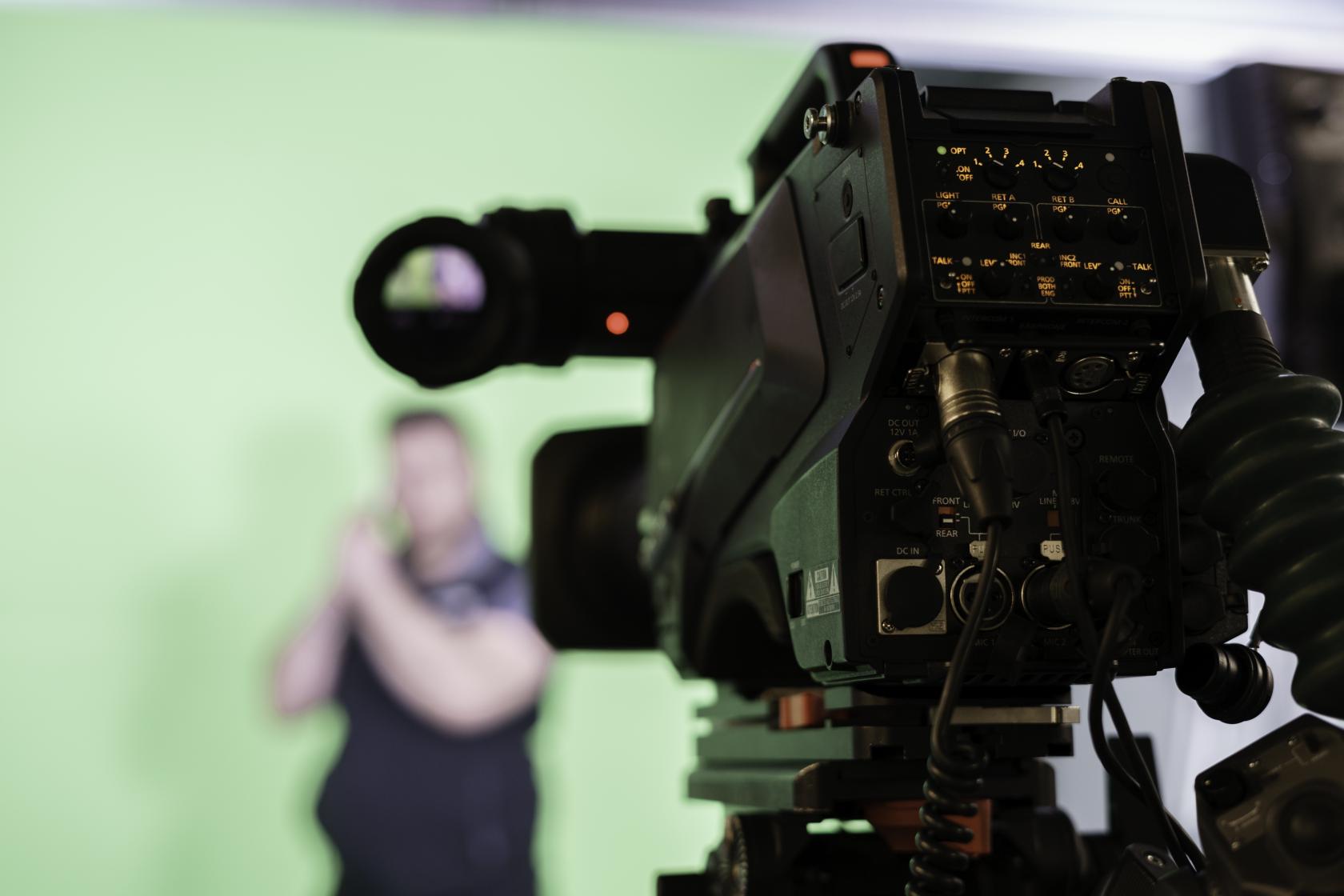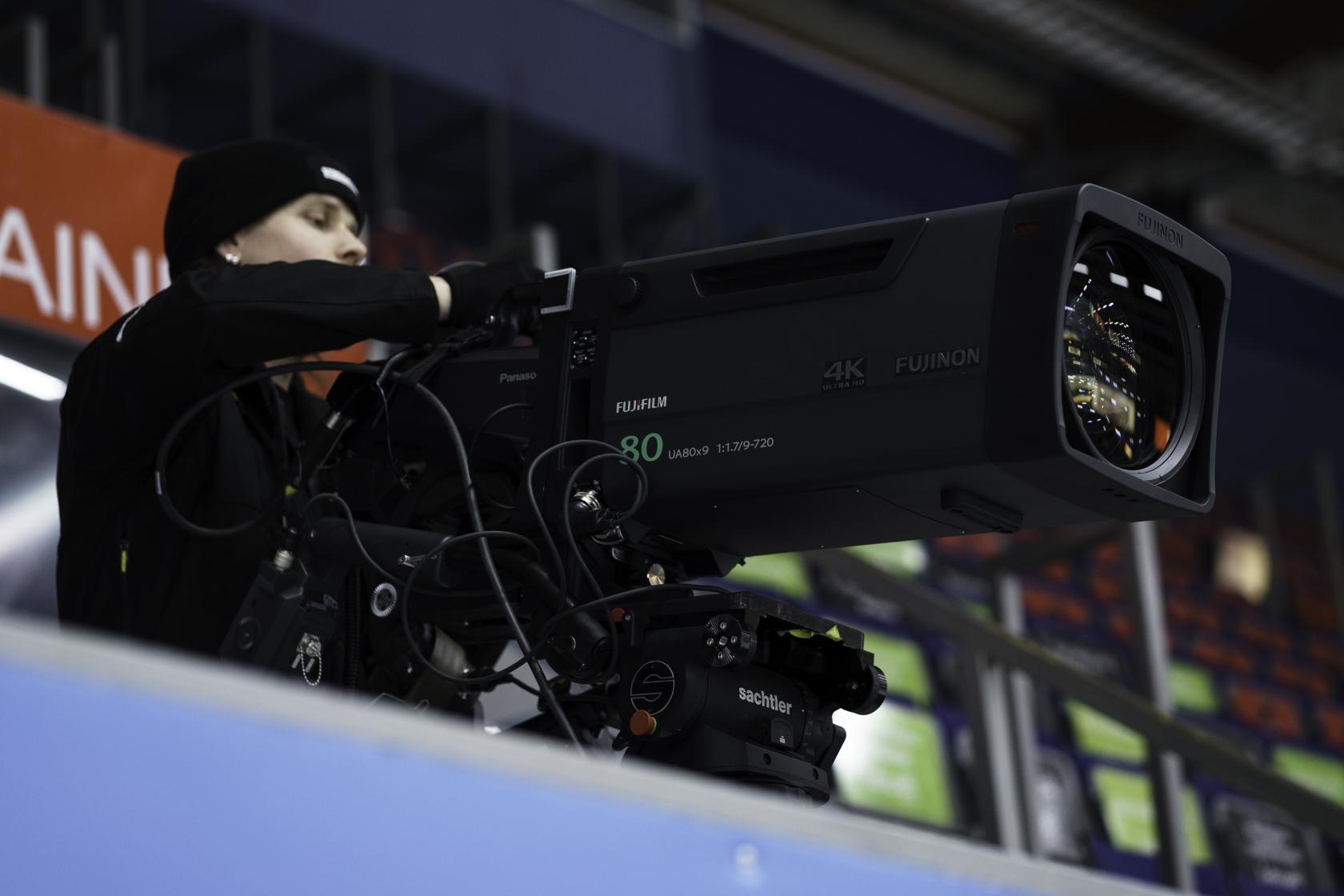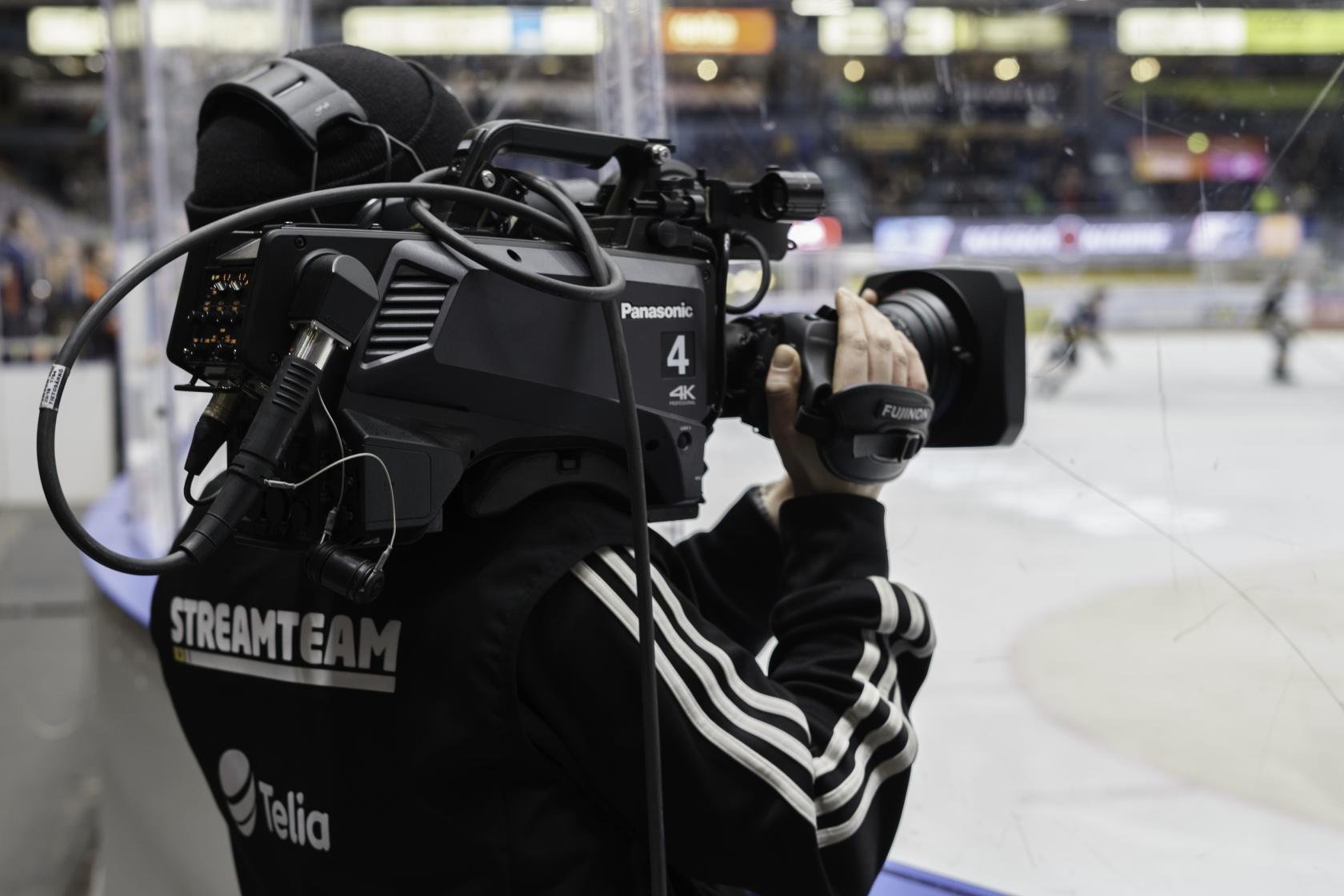Streamteam Nordic: creating a centralised production environment
Breadcrumb
Streamteam Nordic: creating a centralised production environment
Streamteam Nordic Oy, with support from Broadcast Solutions Finland, has set up a new 4K/UHD remote production hub and virtual studio using Panasonic studio and PTZ cameras.
Product(s) supplied: AK-UC3000
Challenge
Streamteam Nordic Oy wanted to expand its current production offering by including the Finnish Elite Ice Hockey League (the Liiga).Solution
The creation of a new 4K/UHD remote production hub and virtual studio using Panasonic broadcast solutions."For Telia, this is an important step to further expand our customer base of around 90,000 active OTT users,” "
Head of Hockey at Telia

The Finnish production company Streamteam Nordic Oy, with support Broadcast Solutions Finland, set up a new 4K/UHD remote production hub and virtual studio at its company headquarters in Helsinki to carry out production for the Finnish Elite Ice Hockey League (the Liiga). The new hybrid concept combines IP-based and SDI-based workflows.
Ice hockey is the most popular sport in Finland both in terms of TV audience and spectator numbers. 14 clubs play each season for the championship in the first division, including the playoffs which amounts to around 500 games per year.
In May 2017, the Finish/Swedish telecommunications company Telia secured the Liiga broadcasting rights for six years, starting with the 2018/2019 season.
Streamteam Nordic Oy, based in Helsinki, was commissioned to carry out the TV production for the games. Streamteam was originally founded in 2006 to offer production services for horse races. “For Telia, this is an important step to further expand our customer base of around 90,000 active OTT users,”explains Olli-Pekka Takanen, Head of Hockey at Telia. “Being able to show exclusive video content is very important in today's market and sets us apart from the competition in the industry.
However, we also expect new and loyal customers for our telco business from our excellent service in the media environment, it is important to use these synergies.” Telia is broadcasting using its own IPTV service. The transmission of signals from the stadium to the production hub uses the telecommunication company's infrastructure. Production service provider Streamteam got the German system integrator Broadcast Solutions on board for planning and implementing the necessary production infrastructure. Together, they wanted to create a future-proof solution for the production of Liiga matches. The result was a centralised production process with remote control that allows simultaneous processing of 4K and HD content. During the development phase, the companies profited from the experience already gained by Broadcast Solutions in this field. “Viewer habits are changing significantly and the era of linear television will soon be over, replaced by a generation that is used to watching its favourite content across a variety of platforms."
"We too need to adapt our business models accordingly and rethink the way we carry out production,”says Juha Koskela, CEO of Streamteam Nordic. "One reason for a centralised production environment is the cost savings and the use of standardised IT software and cloud services. Producing remotely reduces costs by up to 30%, while maintaining the same production quality,” explains Koskela.

Production technology
The new technology centre in Helsinki comprises of eight control rooms, a central audio control room, five off-tube rooms and an MCR, and is connected to seven remote sets on site in the stadiums.
The images from the fourteen stadiums are transmitted via a fibreglass network from Telia to the central hub. The transport of signals from the stadiums to the central hub is handled by Nevion with its Virtuoso platform and the encoding format used is JPEG 2000. Since the Virtuoso platform supports the SMPTE 2022/7 standard, seamless protection switching ensures the redundancy of the stream.
Although signal delivery is IP-based, the production hub itself relies on baseband. "At the start of the project one and a half years ago, we still couldn't rely on a comprehensive IP infrastructure for all elements. Especially because the project had a clear deadline and we couldn't afford any delays,” explains Laurila. Due to the large number of dedicated control rooms, ice hockey games need to be produced simultaneously, and there is a need to easily change workflows between individual match days. Flexibility in accessing all resources is key to the success of the hub.
Panasonic cameras
The new production hub allows seven games taking place in parallel to be produced each week. Two of the matches are produced in UHD at a higher cost.
Six Panasonic AK-UC3000 studio cameras and four PTZ cameras plus, two goal-line cameras, a referee POV camera and sometimes even a super motion camera capture the action. The remaining five games are produced in HD with a smaller setup consisting of nine cameras in total (five broadcast cameras, four PTZ cameras).
Depending on the match, trucks with five to seven camera operators are dispatched to the stadiums, who handle the setup of the cameras on site as well as the wireless and wired microphones from Sennheiser. “Our setup is completed within just over an hour. This allows us to go back and forth on the day of the ice hockey match. That would not be possible with a traditional broadcasting vehicle,” explains Laurila.

In addition to the actual image production, the video referee has also been centralised in Helsinki. Seven Simplylive servers, each with eight inputs, are connected to the work stations of the referees, allowing the video material to be retrieved in the event of a critical moment. The special feature of the system is its ability to allow two referees to access a server simultaneously.
Virtual studio
Also new is a virtual studio, which relies on technology from Zero Density and uses two camera robots, both controlled by just one operator.Another camera is used on a Cartoni tripod and the SDI signal from the virtual studio is then transmitted via a dark fibre line to the production hub. Streamteam has licensed three rendering engines from Zero Density for the virtual studio, which can be extended or shut down as needed in the future. "The use of virtual sets will also determine the future and they can be changed as required. The high cost of set design is therefore minimised. This flexibility is extremely important,” says Koskela.
Copyright: MEDIEN BULLETIN / mebulive / Ausgabe 1.2019
Read more insights…
article
PANASONIC UNVEILS CUTTING-EDGE REMOTE CAMERA CONTROLLER WITH MACRO FUNCTIONALITY AND DUAL JOYSTICK CONTROL
Panasonic unveils groundbreaking remote camera controller that’s set to revolutionise operator workflows, featuring Panasonic’s first-ever macro functionality, dual joystick control, and seamless peripheral integration.
article
PANASONIC REDEFINES VIDEO PRODUCTION WITH NEW 4K MULTI-PURPOSE CAMERA AND WORLD’S FIRST AUTO-FOCUS FUNCTION
Panasonic unveils the AK-UBX100 4K multi-purpose camera, featuring auto-focus functionality that delivers more flexibility and precision than ever before.
Case Study
O2 Production Relies on Panasonic KAIROS for Broadcasting Top-Tier Football and Ice Hockey in Czechia
In November 2023, O2 Production secured exclusive broadcasting rights for the Czech First League and Czech Extraliga – the country’s premier football and ice hockey leagues, respectively. With only a few weeks to prepare before the end of the year, it faced the challenge of managing up to eight simultaneous live broadcasts. To meet this demand, a cutting-edge Remote Broadcast Centre was constructed in Prague’s Brumlovka district, built entirely on the SMPTE ST 2110 IP-based protocol.
article
PANASONIC APPOINTS UNIVERSITY OF STAFFORDSHIRE AS KAIROS ACADEMY PARTNER
Staffordshire is the first UK university to become a KAIROS Academy Partner, offering students a state-of-the-art eSports degree that equips them with essential industry skills.
Sorry there was an error...
The files you selected could not be downloaded as they do not exist.
You selected items.
Continue to select additional items or download selected items together as a zip file.
You selected 1 item.
Continue to select additional items or download the selected item directly.
Share page
Share this link via:
Twitter
LinkedIn
Xing
Facebook
Or copy link: